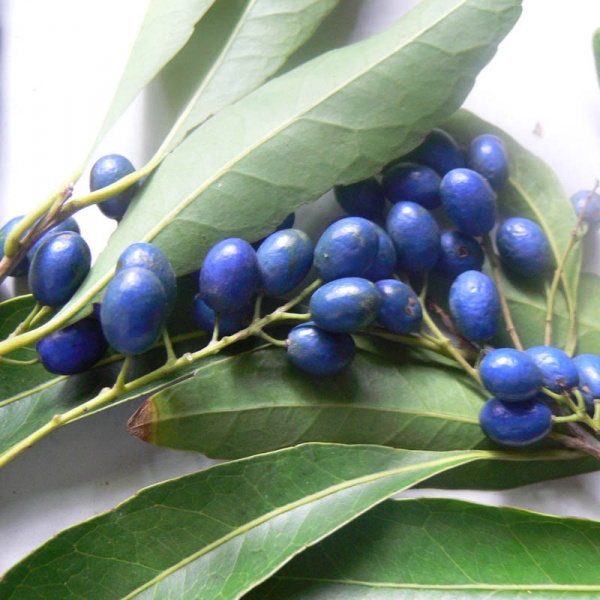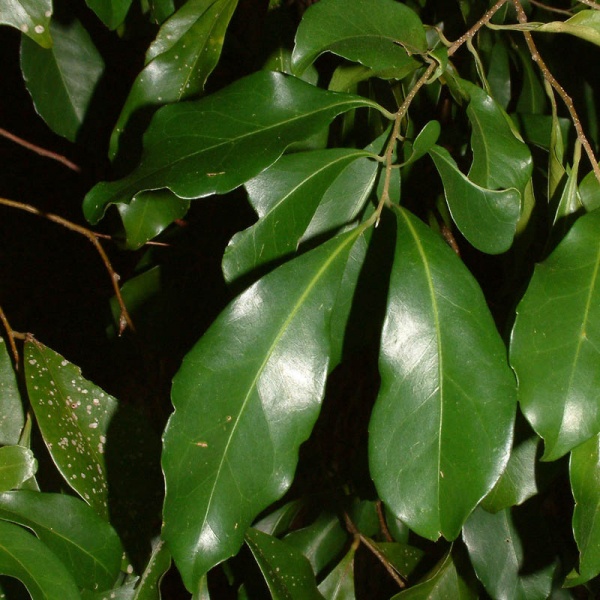Scientific Name: Elaeocarpus obovatus
-
Pronunciation:eel-ee-ah-CAR-pus ob-ah-VAR-tus
-
Common Name:Hard Quandong




-
Derivation:Elaeocarpus: Gr. elaia - olive. Cr. carpos - fruit |obovatus: Obovate in (leaf) shape.
-
Type:
-
Family:ELAEOCARPACEAE
-
Flowers:white, bell-shaped, with 5 fringed petals, spring, summer
-
Fruit:blue drupe
-
Vegetation Type:Rainforest,
-
Species List:Bush food, FI Podberscek, NLTalks2010, Boreen Point Caravan Park, NNP Parkedge/Alex, Cooroy Mill Site, NNP service road, BSDoonan, Fraser Island, Mill Point, Cooroibah Conservation Park, Cooroibah Bushland Reserve, Cranks Creek planted, Batianoff 87, NNS, Leslie Drive Roundabout, Noosa Banks, Noosa River NP, BHNR, Kin Kin Arboretum, Heritage Park, Wallace Park,
Cultural Notes
"Aborigines made necklaces out of the seed after eating the flesh" (BRAIN)||. Bush food: Edible fruit - best cooked.||
Identification Notes
Branchlet: brownish grey with scattered lenticels, |Leaf: one-foliolate, margins toothed in upper half. ||Large upright tree with buttresses.||
Associated Fauna
Bird and butterfly attracting. Butterfly host plant: Eastern flat, fiery jewel.||The fruit is attractive to birds, especially silvereyes.||
Landscaping Notes
Landscaping potential in suitable areas. Fire retardant species. Bushy tree for moist, well-drained soils. Shapely specimen tree.||Successfully propagated by Mooloolah Native Nursery|| "A fast growing tree suitable for larger gardens and windbreaks. Attractive in both flower and fruit. Germination is both difficult and erratic but strikes readily from cuttings." (BRAIN)||Successfully propagated by Barung Landcare||


